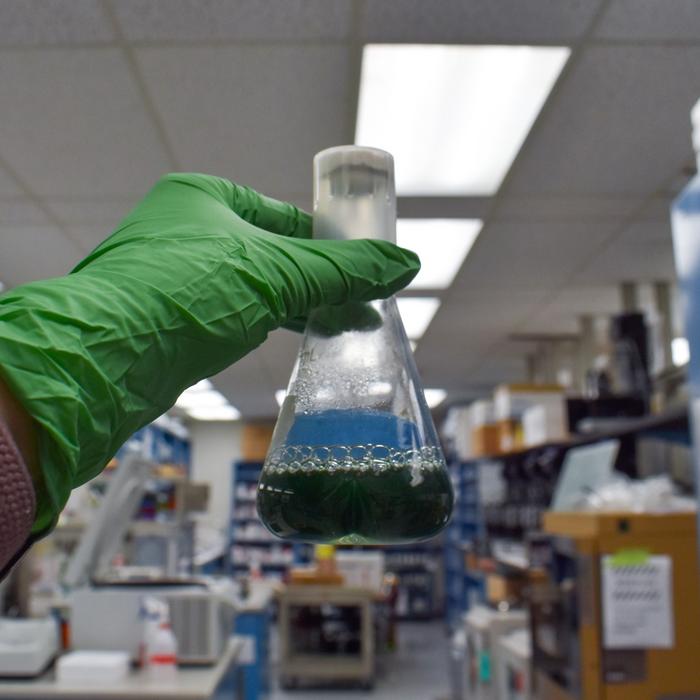For over two billion years, the chloroplast has stood as a cornerstone of photosynthetic life, enabling plants and algae to convert sunlight into the chemical energy essential for life on Earth. This remarkable organelle, packed with photosynthetic machinery, is not a product of simple cellular evolution but rather the result of an ancient symbiotic event that forever altered the trajectory of life. Recent research endeavors are now focused on unraveling the complexities of this evolutionary milestone by recreating the ancient partnership between single-celled organisms and cyanobacteria—the photosynthetic bacteria from which chloroplasts originated.
The prevailing theory posits that the chloroplast evolved through endosymbiosis, a process where one organism lives inside another in a mutually beneficial relationship. Roughly 2.1 billion years ago, a single-celled host engulfed cyanobacteria, leading to a symbiotic relationship that, through a series of genetic and cellular adaptations, transformed a free-living bacterium into an indispensable organelle. Despite advances in molecular biology, many details surrounding this transition—from temporary residency to permanent integration—remain elusive. Understanding how cyanobacteria evolved into chloroplasts can illuminate broader evolutionary mechanisms and potentially inform innovative bioengineering applications.
In a novel international collaboration, researchers from Michigan State University, the French National Centre for Scientific Research, and the Jülich Research Center aim to simulate this primordial relationship in the laboratory. Rather than attempting to recreate the chloroplast outright, the team employs the unicellular organism Paramecium bursaria as a living model system, capable of engulfing algae and cyanobacteria. By introducing engineered strains of cyanobacteria into Paramecium bursaria, scientists hope to observe and manipulate factors that allow symbionts to survive and contribute to their host’s fitness over time, thereby shedding light on the early steps toward permanent endosymbiosis.
Professor Daniel Ducat of Michigan State University emphasizes that this approach, while unable to physically rewind evolutionary history, allows researchers to ask crucial questions about compatibility and cooperation. “We have to be a little generous in our interpretation,” Ducat notes, “because obviously we’re not able to take a time machine back. A fundamental question is what kinds of processes or partners were best suited to each other to give rise to chloroplasts.” This experimental framework pivots on the dynamic between host and symbiont, probing the molecular signals and cellular environments that enable a transition from casual association to obligate symbiosis.
Central to the investigation is the nature of Paramecium bursaria’s host environment and its readiness to accommodate cyanobacteria. The research explores how temporary “renters” could evolve into “full-time residents” within the host cell’s internal milieu. This shift involves complex adjustments in cellular metabolism, gene expression, and intercellular communication. Examining these parameters could illuminate how early microbial partnerships stabilized, preventing the symbiont’s digestion while fostering mutualistic exchanges.
Beyond evolutionary curiosity, this research has profound implications for the field of synthetic biology. Engineering communities of microorganisms that cooperate efficiently resembles orchestrating a miniature ecosystem where each species specializes but also contributes to communal objectives. Insights into the maintenance of natural endosymbioses could catalyze the design of synthetic microbial consortia optimized for tasks such as sustainable biofuel production, bioremediation, or novel biosynthetic pathways.
The collaboration benefits from the complementary expertise of the three participating laboratories. Johan Decelle brings mastery in the biological intricacies and advanced visualization techniques related to Paramecium bursaria, while Dietrich Kohlheyer contributes microfluidic technologies that enable finely controlled experimental manipulation of microbial interactions. Professor Ducat’s deep knowledge of cyanobacteria biology and genetics ensures precise engineering and interpretation of the symbiont’s behaviors and adaptations.
Microfluidic devices, a key technological advancement harnessed in this project, allow researchers to simulate and monitor micro-environments around host-symbiont pairs with exceptional spatial and temporal resolution. This enables controlled manipulation of environmental conditions such as nutrient gradients, light exposure, and chemical signals, providing new avenues to dissect the factors that drive symbiotic establishment and longevity.
The team’s integrated approach underscores a critical insight that breakthroughs in biological research often emerge at the cross-section of disciplines. Rather than working in isolated silos, the synthesis of microbiology, evolutionary biology, synthetic biology, and engineering creates a robust platform for innovation. As Ducat eloquently puts it, “The best projects are ones done at the interface, where distinct perspectives and talents come together to build something greater than the sum of its parts.”
Investigating this ancient endosymbiotic event through a modern lens not only enhances our understanding of evolutionary biology but also sets the stage for transformative technologies. By deciphering how symbiotic partnerships emerge and stabilize, researchers could eventually engineer novel biological systems that serve human needs while promoting sustainability and ecological balance.
Ongoing experiments aim to document the physiological responses of Paramecium bursaria upon cyanobacterial colonization, assessing host fitness, metabolic exchanges, and gene regulatory changes over extended periods. These longitudinal studies will reveal whether engineered symbionts can persist, replicate, and contribute functionally within their host—a critical step toward mimicking the evolutionary path that led to chloroplasts.
Ultimately, this research invites a reevaluation of evolutionary timelines and mechanisms, emphasizing the dynamic and often gradual nature of symbiosis. The findings promise to redefine our conception of cellular complexity and inspire new paradigms in bioengineering, where understanding life’s deepest partnerships translates into groundbreaking applications.
Subject of Research: Evolutionary origins and synthetic recreation of chloroplast endosymbiosis through the interaction between Paramecium bursaria and engineered cyanobacteria.
Article Title: Recreating Ancient Partnerships: Engineering Endosymbiosis to Understand Chloroplast Evolution
Web References:
- Michigan State University Department of Energy Plant Research Laboratory: https://prl.natsci.msu.edu/
- Michigan State University Department of Biochemistry and Molecular Biology: https://bmb.natsci.msu.edu/
- Researcher profile – Daniel Ducat: https://directory.natsci.msu.edu/Directory/Profiles/Person/100408
Image Credits: Kara Headley
Keywords: Evolution, Endosymbiosis, Cyanobacteria, Chloroplast Evolution, Synthetic Biology, Microbial Symbiosis, Paramecium bursaria, Microfluidics, Bioengineering, Sustainable Biofuels, Evolutionary Biology




